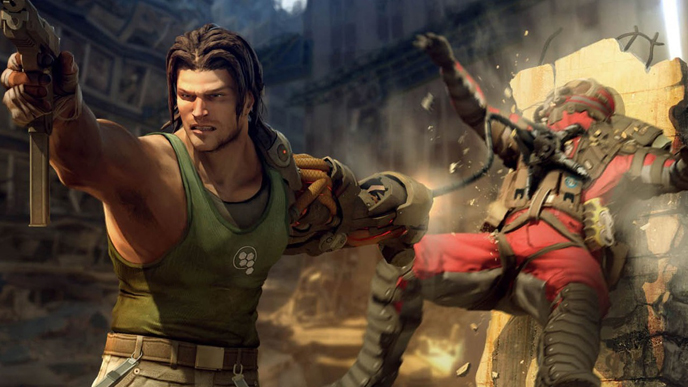Charisma is like pornography–I can’t define it, but I know it when I see it.
Erm, let me start over.
But first, a caveat: Dungeons & Dragons is intentionally open-ended and subject to interpretation. It is meant to spark decades-spanning debates, foster a sense of camaraderie, and sometimes destroy friendships. (Ok, not that last one.) The point is, all this is my opinion and my perspective, honed over 25 years of gaming, since grade school.
What is Charisma?
Let’s talk about what Charisma isn’t.
For a lot of its history, D&D has fostered this impression–not exactly a misconception, but an oversimplification–that Charisma is a measurement of how beautiful you are.
That your physical appearance is the primary factor in how well you can convince people of things, how well you can persuade people, how much people like your performance when you’re rocking it out, and how good a leader you are.
Or, y’know, how effective your sorcerer spells are. Or your paladin smites. Or your warlock invocations. Or basically any magic you do unless you’re a wizard or cleric and thus not one of the cool kids.

Hot damn. She looks like her fireballs would be hard to dodge because she’s so pretty. Wait, what? (Artist unknown, found on Fjcdn.com)
I mean, yeah, beautiful people *are* often very good at lying, and we believe CHA-focused characters (like movie stars) way more than INT-focused characters (like scientists) about things like 1) Is the Earth round? and 2) Do vaccines cause autism? and 3) Who should we elect as president, a racist yam or a competent woman who looks a bit tired?
Ahem. All right, that was too easy. Ahem.
Charisma isn’t just skin-deep.
But what is it?
History of Charisma in Dungeons and Dragons
In the early, halcyon days of kicking down doors, killing people, and taking their stuff we call early D&D, Charisma, that 6th ability score on the list, was an easy dump stat. It typically wasn’t relevant to your adventures, except for the occasional social encounter, when it would give you a static bonus or penalty to the check to determine whether randos wandering across your path would like you or not. Ostensibly, this would determine whether the randomly determined table of prostitutes (no lie, look in the back of the 1e DMG) tries to get you to hire them or tries to stab you and leave your corpse in the gutter.

I’m just saying, game designers can be lonely. And sexist. (Source: D&D 1e Dungeon Master’s Guide)
Otherwise, a high charisma served three distinct purposes: 1) allow you to qualify for the paladin class (Prerequisite: CHA 17? WTF?), 2) fuel how many followers you attracted at high levels (higher charisma equals a better leader, equals more hangers-on, you know, like in real life), or 3) indicate whether a character was female (without fail, every female character in an early D&D book has Charisma 15 or higher–fight me).
In 2e, Charisma didn’t have much purpose other than what I’ve outlined above, and some Nonweapon Proficiencies. You’d get a reaction bonus or penalty with NPCs, so you’re well served to have the charismatic PC be the face of the party. This didn’t always translate into “make the player who can talk good” into being the party leader, and often the more interested and forward roleplayer would end up with the low-to-average charisma bruiser and your kid brother who just wants to be included ends up playing the Chaotic Evil fighter/mage with the high charisma who starts ALL the fights. (True story.)

High Charisma, Zero Chill. (artist unknown, found on Gameforge.com)
When WotC rebuilt D&D for 3rd edition and later for 3.5th (rd?) edition, they decided to make Charisma more significant. They introduced the sorcerer–like a wizard, but for players who didn’t want to do all the tedious spell management and preparation and just liked a few spells they could use to blast things. They introduced the warlock, whose magic worked similarly but was largely dependent upon how clever they were in negotiation their pact with some evil eldritch entity (#Cthulhu #HighCharisma #Chosen). And there were a lot of skills, many of which actively used Charisma. No longer was it the dump stat of yore.
At this point, it became clear that Charisma wasn’t just “how much people like you.” It was still that, obviously, but it had to tap into this RAW STRENGTH OF SELF POWER. You were literally (er, figuratively) walking around with a ring with a heart symbol on it, and you did things BY THE POWER OF HEART.
Around this time, when they were picking races for 4e, WotC decided that Charisma had become so important, and that it was more about COOL than BEAUTIFUL, that tieflings went from having a Charisma PENALTY (in 3e) to having a Charisma BONUS (in 4e)*. Also because darkness is cool, kids. Eladrin (or high elves) had a Charisma bonus. Half-elves had a Charisma bonus. All the races who are cooler than you, a mere human, became literally cooler, on average, than you.
* Note: Tieflings also had a Charisma bonus in 2e. Because those designers knew darkness was sexy.
In 4e, Charisma became important also because it was significant to your defense. You could resist enchantment, compulsion, fear, and other such sorts of effects based on your Will defense, which was calculated either with your Wisdom OR your Charisma. Yes, you could literally tap upon your massive ego to ward off a wizard commanding you to perish with a death spell. Or to remember that you are, in fact, a high level monk on a mission to find a lost scroll, and not a small squirrel that you were just polymophed into. (Though to avoid the polymorph, that’s actually a Fortitude thing.)

High Charisma squirrel. (Found on Tumblr, because Tumblr)
(Come to think of it, I think that’s a DM ruling and not a RAW example, but anyway, you get what I’m saying.)
In 4e you could also take Combat Training (Charisma), which allowed you to use your Charisma modifier AS YOUR ATTACK MODIFIER. You could literally out-cool, out-beauty, out-insult, or out-fox an opponent. With a sword. To death.
5e tripled down on the “Make Charisma the New God-Stat, GTFO-Dexterity” quest, and now, well, everyone can stand to have a few points in this big, complicated, important ability score. Bards (the OGs of Charisma) use it for their performances and magic, sorcerers and warlocks channel it into casting spells, while paladins and even clerics (really? clerics!) use it to reflect the strength of their faith while channeling divine power.
I predict that in 6th edition, everyone will use Charisma all the time, and it will be a primary ability score for all classes. Because social skills are important, kids. Stay in school, but mostly for recess and extra curriculars. (Go Rams!)
What Charisma is, 5th edition:
Charisma is this murky combination of physical appearance, social skills, ego, self-confidence, and awareness of self.
A charismatic person is instantly likeable, instantly noticeable, and draws your attention, affection, or jealousy. They may be eloquent with words, persuasive, charming, or just deeply, emotionally supportive. You’re more likely to click with someone with a high charisma than a low one, and become friends with them quickly. If they ask for a favor, you’re likely to go right along with it, no questions asked.
High charisma people are the people you’re constantly talking about, whether in a good or bad way. They may be drama factories or cool, controlled badasses you want to emulate. You probably believe them easily and want to think the best of them, or if they’ve wronged you, it’s easy to feel manipulated or toyed with by them. This isn’t to say that you instantly fall in love with everyone you meet with a high charisma, or that anyone just becomes a stalker around a person with high charisma. But the odds are you’ll have a more favorable impression of them than some other rando you meet on the Internet, er, street.

You, man. YOU. (Fallout 4, Bethesda)
The higher the charisma, the more pronounced the effect. It’s like fame: the more famous you are, the harder it becomes to avoid notice, and the more stalkers will be drawn to you. Really high charisma becomes a curse in its own way–a lot of people like you, but it becomes difficult to tell if they like you FOR YOU, or for how charming, powerful, beautiful, popular, etc. you are.
Charisma also represents your inner strength and force of will in an offensive sense. In D&D, sorcerers can literally manipulate magic that wells up inside like a spring, and obviously Charisma is the force that does that. Warlocks are much the same way, though that power originally came from the eldritch entity they somehow convinced to give them power. Paladins use Charisma when smiting things. Etc.
Charisma is great. Important.
So what do various Charisma stats mean?
I’m gonna say a few things about each level of charisma, and try and give an example that we can all relate to. We’ve all seen the Lord of the Rings movies, right? Welp.
Charisma 0 is an object. If you have Charisma 0, you don’t know you’re not an object. You can’t tell yourself apart from the world around you.
A sentient plant is CHA 1. If you have this level of charisma, you sort of know you exist, but mostly you’re an automaton.
An animal is probably Charisma 2-3. At this level, you know you’re a separate being from the world, but you see yourself as being a part of others. Your pack, for instance, is also you. You serve a purpose in that pack. The wargs in LotR have this level of Charisma.
Brutish humanoids have Charisma 4-5. At this level, you’re a bit more settled than an animal and you sometimes disagree with others of your own kind. But generally, you do as you’re told by those you see as superior and you don’t even consider having a conversation. What would be the point? The orcs and goblins in LotR typically have Charisma around this level.
Most humans range from:
Charisma 6-7: You have low social skills and limited emotional affect. You avoid others, and they avoid you. You have difficulty relating to people and a weak sense of self. Gollum has this level of Charisma, as do most Uruk-hai (augmented orcs).
Charisma 8-9: You’re gruff, brusque, rude, irritable, just some person most people don’t like very much. People don’t like paying attention to you and look forward to escaping a conversation with you. Gimli the Dwarf has this level of Charisma, as does the leader of the Uruk-hai (y’know, that jerk with the bow).
Charisma 10-11: You’re average, competent, can carry on a conversation, and are kind of forgettable. Many stranger don’t keep track of you if you don’t hang out a lot. Most hobbits in the Lord of the Rings have this level of Charisma, including Frodo and Sam.
Charisma 12-13: You are sunny, interesting, charming. You’re the one people want to be friends with. There are things about you that others want to learn or experience, such as your excellent singing voice or your inspiring bravery. Merry and Pippin have this level of Charisma, as do Eowyn and Faramir–likeable enough, but easily overshadowed by greater presences.
Then you get into the higher tiers, which are increasingly rare and make a big difference. At these tiers, you’re the kind of person who can walk into a room and all the attention goes to them, regardless of what was happening–unless someone with a higher charisma is there:
Charisma 14-15: You are magnetic, compelling. You’re the popular one in the class. You set trends, even without meaning to. You are a competent leader, but you don’t inspire fanatical loyalty. People trust and admire you and try to emulate you. You have your moments of greatness. Arwen and Boromir have this level of Charisma, and Gandalf is probably about here.
Charisma 16-17: You seize people’s attention without doing anything. You might be the beloved leader of an entire community, a great hero, or perhaps a person of great faith or principle. People may get flustered trying to talk to you, and you who can talk most people into doing whatever they want. You can lead a fellowship into battle and they will follow you into peril. This is Legolas’s level of Charisma, and it has most to do with how handsome and graceful he is.
Charisma 18-19: You are a star. People grow happy at seeing you and start crying when you’re upset, people can’t help but love you. You’re the beloved king of a nation. People have a hard time focusing on anything else while you’re there, and often people lose track of what they were saying when engaged with you. You can lead armies into battle. Aragorn has this level of charisma.
Charisma 20-21: You have an unnatural appeal and power that exudes from you like nothing most people have ever experienced. Yours is an otherworldly presence that makes most people either nervous or distracted around you. It takes a similarly strong sense of self to question you or argue with you. Galadriel has this level of Charisma, as does Sauron.
Examples of High Charisma
James Bond, for instance, has high Charisma.He’s very good at getting people to like him, and it isn’t just his sparkling personality. He’s an excellent manipulator and well known as a womanizer, which he couldn’t accomplish without high charisma.

I’ll have those dice shaken, not stirred. (image copyright MGM)
His actual attractiveness is up for debate. I mean, I’m not really much to judge, but I do know that Sean Connery and Roger Moore look fundamentally different. Daniel Craig has a hard, predatory look and riveting blue eyes that might have been chipper from an iceberg and… ahem, like I said, I’m not really much to judge. Regardless, James Bond is one charismatic asshole, emphasis on the asshole.
Speaking of charismatic assholes, Tony Stark. Sure, he’s handsome and all, but it’s mostly the money and the attitude. He just projects self-confidence, which is why he’s most compelling (IMO) when he’s at his weakest in this respect, in Iron Man 3. But I digress. Generally speaking, Tony Stark is the charismatic face of the Avengers.

Lots of money, mostly. (Image by Marvel Studios)
Tony’s charisma doesn’t always help him. Sometimes it gets dangerous people involved with him. He attracts lunatics, and I don’t just mean the big green ones. Whether they’re jealous business partners, dedicated assassins, or creepy stalkers with bad hair, many of Tony’s worst enemies are envious of his success and charm.
Speaking of charisma not always being a good thing, Galadriel.

Yes, yes we will. (Image from New Line Cinema)
Seriously, mostly people can’t even act normally around her, she’s so beautiful and graceful and serene and then when she goes DARK, it just gets MORE and… you know what, I’m going to move on.
I think you get what I’m saying.
Examples of Low Charisma
High charisma is all around us. Kings, queens, paladins, everywhere you look, there’s some charming dude or steely-willed lady commanding hapless rubes to their deaths.
And most people around us just have average charisma. Most of us also have average charisma. We take care of ourselves, we hang out with friends, we try to be attractive if that’s what we’re looking for, etc. But most of us are just a crowd, and the high charisma people are the ones who stand out in the crowd.
What about LOW charisma, though? How is that represented in the game?
There are lots of ways to explain a lower charisma.
A character or creature with low charisma suffers from a significant deficit in one of the things Charisma represents. They might have zero social skills. They might have very little sense of self or be extremely timid, lacking confidence. They might have hideous deformations, scars, or other wounds. These might all combine to produce a low charisma character.
For example, a low charisma character might have grown up far removed from society and have no ability or interest in that society. If your wood elf has a charisma of 4, for instance, then odds are they really aren’t good with people at all.
If I were designing this character, I’d go the feral route. Your wood elf would be little more than a beast and probably doesn’t have much interest in being treated otherwise. Completely out of their depth in etiquette, social interaction, or even basic conversation. They frequently offend people even when they’re trying to be nice. They might not be house trained or able to stop themselves from making a mess of their surroundings. They might relieve themselves in public or just take their clothes off without regard to the situation.
Did you ever play Final Fantasy III/VI? Do you remember Gau, that wild kid who lived out in the wilderness, was raised essentially by wolves, and could emulate enemy attacks? IMO, that’s an example of a low charisma character.

Remember me? Me friend! (Image by Square Enix)




















/cdn.vox-cdn.com/uploads/chorus_image/image/54957177/Far_Cry_5_Key_Art_Wide_1495770936.1495764208.jpg)









